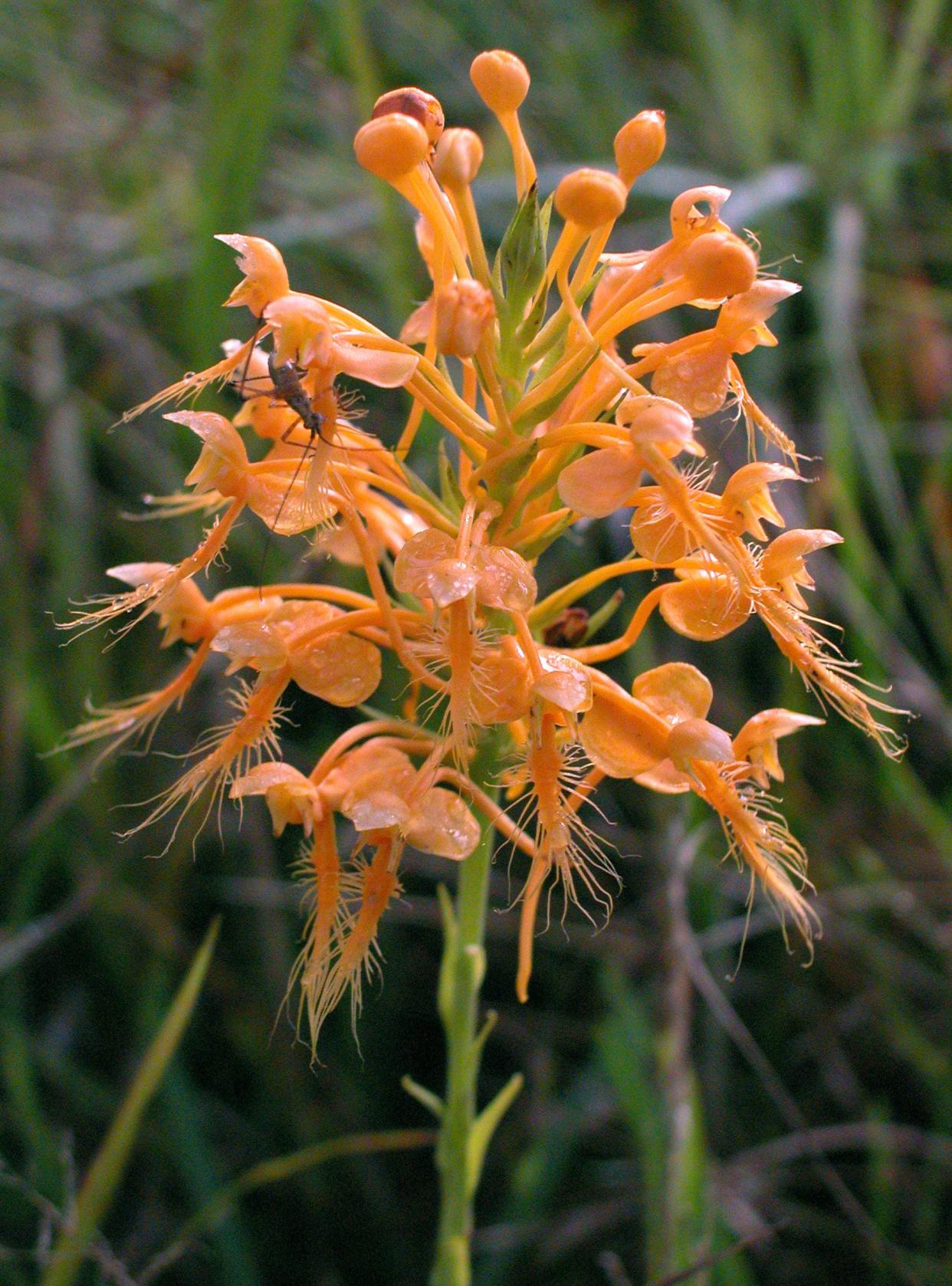Showy native orchid sprouts sword-like leaves, up to 50 flowers at top | Mystery Plant

There are thousands of different kinds of orchids. In fact, botanists generally consider this to be the largest plant family, with upwards of 30,000 different species.
This really is a bewildering number of organisms, and suggests that there are plenty of evolutionary pathways being “tried out” within the family.
Roots and shoots: For plants, life is a balancing act from top to bottom | Mark Tancig
Fall gardening: To do in the garden in September, October: Mind the lawn, refresh fall color
Native flower: History of a native plant: Spiky rattlesnake master packs strong medicinal powers
The orchids, as a group, form a very natural assemblage, and there is usually no mistaking an orchid once you can study it at hand. Of course, there is tremendous variation among these species, and that is one of the reasons this is such a fascinating plant group.
Orchids are found worldwide (except in Antarctica) in a remarkable array of sizes, flower shapes and architecture, as well as habitats and ecosystems. Lots of times when people say the word “orchid,” the listener will have an instant mental image of something bright and showy, hanging from a tree in the tropics, or pinned to an evening gown.
It’s good to realize that not all orchids are tropical, useful as corsages, or epiphytic (growing on other plants) in steaming jungles.
Yellow fringed orchid, Platanthera ciliaris, this week’s Mystery Plant, is a good illustration of these points and I couldn't resist featuring it, as it is truly one of the showiest herbs we have.
Of course, it is a native orchid. It blooms late in the summer and into September. The stems can be up to about two feet tall, and a series of sword-like leaves may be found on the lower part of the plant. There can be 30 to 50 (or more) flowers at the top of a stem. The flowers vary from bright yellow to deep orange, and although small, they are magnificent.
Each flower has three sepals and three petals: one of the petals is modified into what is called a "lip," which in this case is deeply and prominently fringed. In addition, the back end of the lip is modified into a hollow, tube-like spur.
This spur is generally filled with nectar, and long-tongued insects (most of the time butterflies) will land on the lip, and suck nectar from deep in the spur. In the process, the insects take pollen from one plant to another, allowing pollination.
After pollination, dry capsules develop, releasing thousands of very tiny seeds: some of the smallest seeds in the plant kingdom.
This species is native wildflower from New England to Michigan, and south to Florida and Texas. It likes to grow in settings on the Coastal Plain, but also pops up in the mountains.
The plants prefer damp soil and plenty of sunlight, and are often seen in roadside ditches, upland boggy places, and remnants of pine savannas. Frequently they are associated with Sphagnum moss.
Plant fanciers finding this orchid may be inclined to dig it up and transporting it to their back yards, but this rarely works, as the plants are very fussy about ever being moved. The best thing would be to enjoy them (without picking any!) in their natural habitats, whenever located.
John Nelson is the retired curator of the A. C. Moore Herbarium at the University of South Carolina in Columbia SC. As a public service, the Herbarium offers free plant identifications. For more information, visit www.herbarium.org or email johnbnelson@sc.rr.com.
Never miss a story: Subscribe to the Tallahassee Democrat using the link at the top of the page.
This article originally appeared on Tallahassee Democrat: Native yellow fringed orchid prefers damp soil, roadside ditches

